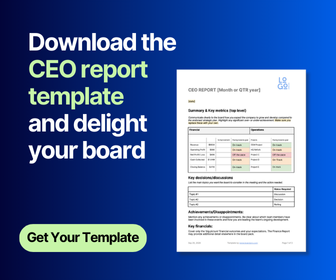Avoiding the CEO Dominating the Board
What happens when the executive leader overreaches into the domain of the board? E.g. when the CEO is pushy or obstructive where the directors feel they are not being heard. Here are signs of board capture, tips on what to do if this is the case, and advice on how to avoid it happening in the first instance.
Warning Signs
- Assessing receptiveness and responses to board input on advice, and follow up on connections offered by directors is informative. In investor speak, one of the key criteria is CEO coachability.
- The CEO withholds key information.
- The CEO resists advice and fails to follow-up on agreed actions.
- The board papers are always late and incomplete.
- Recording the timeliness of information e.g. Board pack preparation and Draft Minutes to the Chair can be used as a [temporary] KPI. Watch out for rambling and / or late papers – and avoid page turning in the meeting which often leads to key issues being missed.
- An unenthusiastic response by the CEO from a valuable director requests to meet with key executives is often telling and can provide clues to not just board but also executive capture.
There is an unavoidable asymmetrical relationship between the CEO and board as to information. The CEO is there day to day. You are not. Experienced directors will quickly determine whether this knowledge gap is being exploited.
The best working boards will ask why has this occurred? – and whether it is a temporary issue, as in a time of director renewal or is it a more ingrained situation? Directors need to obtain agreement that the board has an obligation to play its role and that this is clearly understood by the CEO. It should be with reference to the board charter which sets out the boards responsibilities and should have a Board/management section. A board charter is a policy document that clearly defines the respective roles, responsibilities and authorities of the board of directors (both individually and collectively) and management in setting the direction, the management and the control of the organisation.
What can be done?
- Instigate and / or make use of Board only time. This is a forum for the Directors to share their views (positive and negative) on how the Organisation and its leadership is performing. Board only time is a more sensitive topic where there are executive directors – but sensible conversations should be able to be held where the non-executive directors leave the room. Experienced directors will steer away from offers to join boards where they are the sole independent member.
- Invite Key Executives who report to the CEO to present strategic deep dive sessions in their area of expertise / responsibility. This provides the board with a great ‘cross check’ and alerts the board to information that may be being withheld by the CEO. Not only does this give the board an appreciation of the talent in the Organisation, but it also gives insight into potential succession planning options.
- Solicit Third party input. An example on how this can be achieved is through an opportunity for customers to brief the board on their experience in working with the Organisation. This can also be ascertained through the use of technology e.g. Net Promoter Scores. Board input to the selection / sample of parties is recommended.
- Schedule a board office day where the directors can meet and mingle with the managers and staff without being on the coat tails of the CEO. Appoint one of your managers to facilitate the introductions and discussions.
- Chair to CEO ‘come to Jesus’. At the end of the day the directors have a fiduciary duty to act in the best interest of the Company. Where things are not working it usually comes down to the Chair having a mature conversation with the CEO about fit and style and what the business needs at the time of the conversation. Any conversation needs to be backed up by evidence which we talk about in the section below. If handled well by both parties, it does not need to lead towards role termination. If the conversation does not go well – put a process in place and be prepared to make an exit payment for the good of the Organisation.
Avoiding it happening again?
- Preparing and clearly documenting contracts is important. It may seem like form over substance or an exercise more for larger Organisations but getting it wrong is painful. Do not fall into the trap of a DIY updating of an older contract either. Pay an experienced employment lawyer. CEO performance expectation should include behavioural elements as well as [financial] results.
- Outline success measures with tracking through to a Balanced scorecard / Key Performance Indicators. This should be clearly linked to CEO remuneration. Company performance to Plan should be measured in each board pack and discussed regularly.
- Ensure that the Board assesses its own performance. This allows directors to reflect on what is working and where they individually and as a team can perform better. The more confident boards may elect to include a 360-degree element to this with the CEO.
- Maintain regular communications from the chair to the directors around potential issues. This is often lead by the Chair – but most will welcome a call / coffee from fellow directors where they have something on their mind. The Chair should at minimum catch up with the CEO on at least one occasion between board meetings. These forums can be a most productive way to traverse more gently through sensitive issues.
The board has a fundamental role in stewarding the success of the Organisation. The CEO is selected by, guided, and held to account by the board. Directors need to be vigilant in ensuring any worrying signs are addressed and rectified. Where their advice is not heeded, they have little choice but to act in the best interests of the Organisation.
Share this
You May Also Like
These Related Stories

Board Members Need to Lead the Way

Top Tips for managing the board meeting cycle


